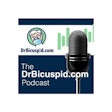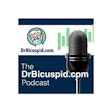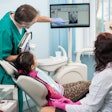Government and professional organizations are warning dental professionals to be on the lookout for patients with swine flu.
According to an ADA advisory, dental workers should watch for patients with flulike symptoms who live in areas where the virus has been confirmed, have recently traveled to such a place, or had contact with someone else with flulike symptoms and who recently traveled to one of these places.
The Centers for Disease Control and Prevention (CDC) Web site lists places where the swine flu has been confirmed.
The ADA recommends that dentists refer such patients to their physicians for testing. Emergency dental care on such patients should take place "in a facility where appropriate training and precautions are in place (i.e., respiratory protection program in place, N-95 mask use, negative pressure room)."
The organization asked sick dental healthcare workers to stay home and visit their physician as necessary. And it advised dental workers to pay particular attention to hygiene habits, such as coughing etiquette.
A CDC poster and flyers on hygiene are available for posting in reception rooms and could be accompanied with tissues and alcohol-based rubs.
- The poster is available at the CDC Web site.
- The flyers are available at Cover Your Cough from the CDC.
The CDC offered these addition resources:
- Interim Guidance on Antiviral Recommendations for Patients with Confirmed or Suspected Swine Influenza A (H1N1) Virus Infection and Close Contacts, April 28, 2009
- Interim CDC Guidance for Nonpharmaceutical Community Mitigation in Response to Human Infections with Swine Influenza (H1N1) Virus, April 26, 2009
- Interim Recommendations for Facemask and Respirator Use in Certain Community Settings Where Swine Influenza A (H1N1) Virus Transmission Has Been Detected, April 27, 2009
- Interim Guidance on Specimen Collection and Processing for Patients with Suspected Swine Influenza A (H1N1) Virus Infection, April 28, 2009
- Swine Influenza A (H1N1) Virus Biosafety Guidelines for Laboratory Workers, April 24, 2009
- Interim Guidance for Infection Control for Care of Patients with Confirmed or Suspected Swine Influenza A (H1N1) Virus Infection in a Healthcare Setting, April 24, 2009
- Interim Guidance on Case Definitions to be Used For Investigations of Swine Influenza A (H1N1) Cases, April 26, 2009
The Swine Flu Resources section of the Organization for Safety and Asepsis Procedures (OSAP) Web site includes an overview of the disease, up-to-the-minute reports on the current outbreak, prevention tips, and links to additional in-depth information.
The OSAP site is constantly being updated as new information is received, with links to reports and updates from the CDC, ADA, Pan American Health Organization, World Health Organization, and the White House, according to OSAP.
In addition, the OSAP Infection Prevention: Spread the Word symposium, which is being held June 11-14, 2009, in Plano (Dallas), TX, will feature courses that address this issue. Dr. Michael Glick will present a session on emerging diseases with a special focus on swine flu, and Dr. Molly Newlon will present a session on emergency preparedness, in which swine flu will be covered.
The Institute of Emergency Preparedness (IMEP) has also issued a swine flu alert, which includes facts about what swine flu is, how to detect it, how to protect yourself against it, and treatment options. For more information, go to www.emergencyactionguide.com.
Copyright © 2009 DrBicuspid.com















